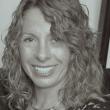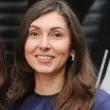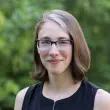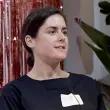Your Interview Yana Yakushina
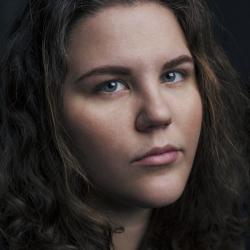
Yana Yakushina
Consultant, Educator, Researcher
Belgium
Introduce yourself (name, company, position, country) and tell us how you got into lighting design (including education/qualifications).
I’m Yana Yakushina and I’m a Ph.D. Researcher at Ghent University in Belgium. I’m a lawyer who was always passionate about sustainable development and environmental protection. You may wonder, how I became a part of the lighting community. And I’m going to briefly tell my story.
I have obtained my LLB and LLM with Honours at the Lomonosov Moscow State University. The focus of my study was the legal aspects of environmental protection and how they can contribute to striking a balance between nature and human activities. Beyond my studies, I have worked as an environmental legal consultant and conducted due diligence for potential real estate projects. The assessment of environmental risks made me realize that the current regulatory frameworks do not address all of the adverse effects that are faced by nature and diversity. The latter became a starting point of my legal research path.
In 2019, I was accepted at Ghent University. At that moment, I didn’t really know what will be my research object. Wallowing in the scientific literature and legislation, I was trying to find something that will not only interest me but also inspire me to bring new ideas, leading to regulatory changes. This, however, had borne no fruit; and I was stuck and frustrated. Eventually, one evening, while wandering the silent streets, my attention was caught by the street lighting. I wondered whether artificial light at night (ALAN) has ever been a legal concern and if so, which aspects are addressed in law. From that moment on I began to discover a fascinating world of lighting, its characteristics, impacts, and legal framework.
During the last decades, ALAN became an important part of our lives that provides the necessary comfort and ability to prolong our day-time activities. Together with that, increased, unwanted, or misdirect nighttime lighting is a great stressor that results in a new fast-growing environmental problem – light pollution, causing adverse impacts on the environment, biodiversity, energy use, local communities, astronomical activities, human health, public safety, and other dimensions. Understanding the need to ensure the balance between the presence of ALAN and the mitigation of its impacts, I started my research on the development of an adequate legal framework for environmentally friendly, energy-efficient, sustainable, and “nighttime-friendly” lighting.
Tell us about your work – is there a specific type of project you like to work on or an area you specialise in and why?
Currently, I continue my research and work as a dark-sky protection consultant and educator. Together with lighting professionals, astronomers, scientists, and policy-makers, I participate in projects, workshops, and conferences, such as the Responsible Outdoor Lighting at Night Conference (ROLAN) and Light Symposium, aiming at raising awareness of light pollution and responsible ALAN technologies. Beyond that, I am engaged in activities with various NGOs and government bodies, including the International Dark-Sky Association (IDA), International Astronomical Union (IAU), United Nations Office for Outer Space Affairs (UNOOSA), Starlight Foundation, Space Court Foundation, and the EU Commission. The main purpose of such collaborations is to find the best solutions for designing nighttime illumination that will allow the presence of dark skies. In addition, as a dark-sky protection expert, I do a lot of public speaking through social media channels.
There are several aspects that I like the most about my job. First, the process of constant learning and an opportunity to gain knowledge every day. As a researcher, I always have to keep track of the further development of lighting technologies, scientific findings on ALAN impacts, and the evolution of the legislation on this matter. Moreover, I love to be one of the pioneers who stands for sustainable changes in the lighting industry. I'm highly inspired by the idea that we will be able to see the dark skies without reducing our comfort. Finally, I'm happy to be surrounded by talented people from different sectors and countries. I believe that only joint work, collaboration, as well as the exchange of knowledge and experience always result in major and valuable changes supported by the stakeholders. I'm also convinced that the lighting community should be more involved in dark sky protection, due to its opportunity to directly apply the best ALAN practices.
What project are you most proud of and why?
One of the projects that I am proud of the most is the Dark and Quiet Skies II for Science and Society Working Group Reports.
In October 2021 the online Conference on Dark and Quiet Skies for Science and Society was held. The conference was co-organized by the United Nations Office for Outer Space Affairs (UNOOSA), International Astronomical Union (IAU), and the Government of Spain. More than 700 professionals participated. The main aim of the event was the discussion of measures to mitigate the impact of artificial interferences affecting the visibility of the sky. The results of this Conference were published in the Working Group Reports.
I was invited to assist with the ALAN Working Group Report. I wrote a summary and conducted an analysis of the current policies, laws, and regulations that address light pollution. The summary includes instruments across various jurisdictions and levels.
In my opinion, the published document brings a valuable contribution because it not only addresses the new environmental problem and increases awareness of the issue but also suggests possible mitigation measures and shows examples of policy and legal approaches.
What is the biggest challenge that you have overcome in your career?
The biggest challenges that I have to overcome are (1) a lack of awareness that light pollution is an environmental problem and (2) limited cooperation between lighting professionals, scientists, and policy-makers. These two problems impede the adoption and/or implementation of legislation for more responsible and more environmentally-friendly lighting. Therefore, I always have to make an additional effort to explain the need for such lighting installations and spread knowledge on the adverse impacts of light pollution and the value of natural darkness.
How does light inspire you?
For me, light is a dual category. On the one hand, light is a natural phenomenon and energy. The light emitted from the Sun, the Moon, stars, and other celestial objects. Natural light, especially from the starlight, has always been a source of inspiration for culture and scientific research. In this inspiring character that unites generations, I see the beauty of natural lighting. On the other hand, artificial light. Artificial light is a reflection of the advanced technological achievements of humankind. The result of the progress that provided us with our day-to-day comfort. I am inspired by the opportunity to experience both natural and artificial light, especially if they are present in harmony.
What is your message for other Women In Lighting?
Follow the light of your dreams because you never know where it will guide you and how you will actually achieve your desires, but it will definitely be a worthful and truly enjoyable path. Even if it seems unrealistic or contradictory there is always a place for everything. Even for the combination of artificial light and natural darkness!
“Follow the light of your dreams... There is always a place for everything. Even for the combination of artificial light and natural darkness!”

